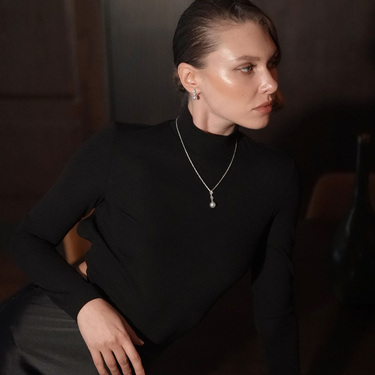- CityPages.Pro
- Blog
- A Guide to Mikimoto Cultured Pearls
A Guide to Mikimoto Cultured Pearls

Pearls stand the vicissitudes of time in more than one way. They take years to form in the mantle tissues of mollusks. At the same time, they have been some of the most desired organic gemstones worldwide for centuries. While the bright white and spherical shape is mostly associated with them, pearls are largely diverse and can be made through external human administrations. This process is called culturing. Kokichi Mikimoto, the founder of Mikimoto pearl jewelry, was the first to engineer them.
Cultured Vs Natural Pearls
Unlike natural ones that form organically within the tissues of mussels or oysters (initiated by an irritant), cultured pearls are engineered through human intervention. They are grown in pearl sacs inside mollusks in different environmental conditions, specifically for the purpose of creating pearls. These mollusks are raised for this very purpose. In fact, most organic gems in the market are purposed for cultured pearl jewelry.
Culturing creates a unique environment condition for each mollusk that produces a different color, shape, and form of pearl. The mantle tissue of a mollusk is inserted with a pearl bead and transplanted onto the gonad of the host mollusk. A sac forms around the bead, which secretes the nacre and transforms the bed into a cultured pearl.
What Are Some Common Types?
- South Sea Pearl Jewelry: These pearls get their name from being cultivated in Australia, the Philippines, and Indonesia. These are the foremost when it comes to saltwater South Sea pearl jewelry. These pearls take a different color, like silver or golden, depending on the oyster.
- Freshwater cultured pearls: Most pearls you see at jewelers are freshwater. They are largely produced, which also tips the price range on the lower end. These oysters are generally cultivated in clear ponds and lakes, which makes them highly curatable.
- Akoya Cultured Pearl: These are the most distributed organic gemstones in the United States. These are the classic creamy or bright white pearls available in Western markets. China and Japan are the biggest suppliers of Akoya cultured pearls, which Mikimoto distributes.
- Tahitian Cultured Pearls: These are found in the waters of French Polynesia. Though nicknamed "black pearls," their color runs quite the spectrum, even pink, purple, and blue. The hue that the mother of pearl takes on depends on the unique nacre that each individual mollusk secretes.
Wrapping Up
Developing cultured pearl jewelry is an endeavor that requires much labor, experimentation, and chance. There are numerous environmental factors as well as human interventions that are required to produce a mother of pearl of a specific hue, size, and shape.
To get your best pick, it's important to choose from well-reputed stores. Make sure you always invest in the top-quality Mikimoto pearl jewelry.
Contact Us For More Information: https://www.deutschhouston.com/contact-us.html